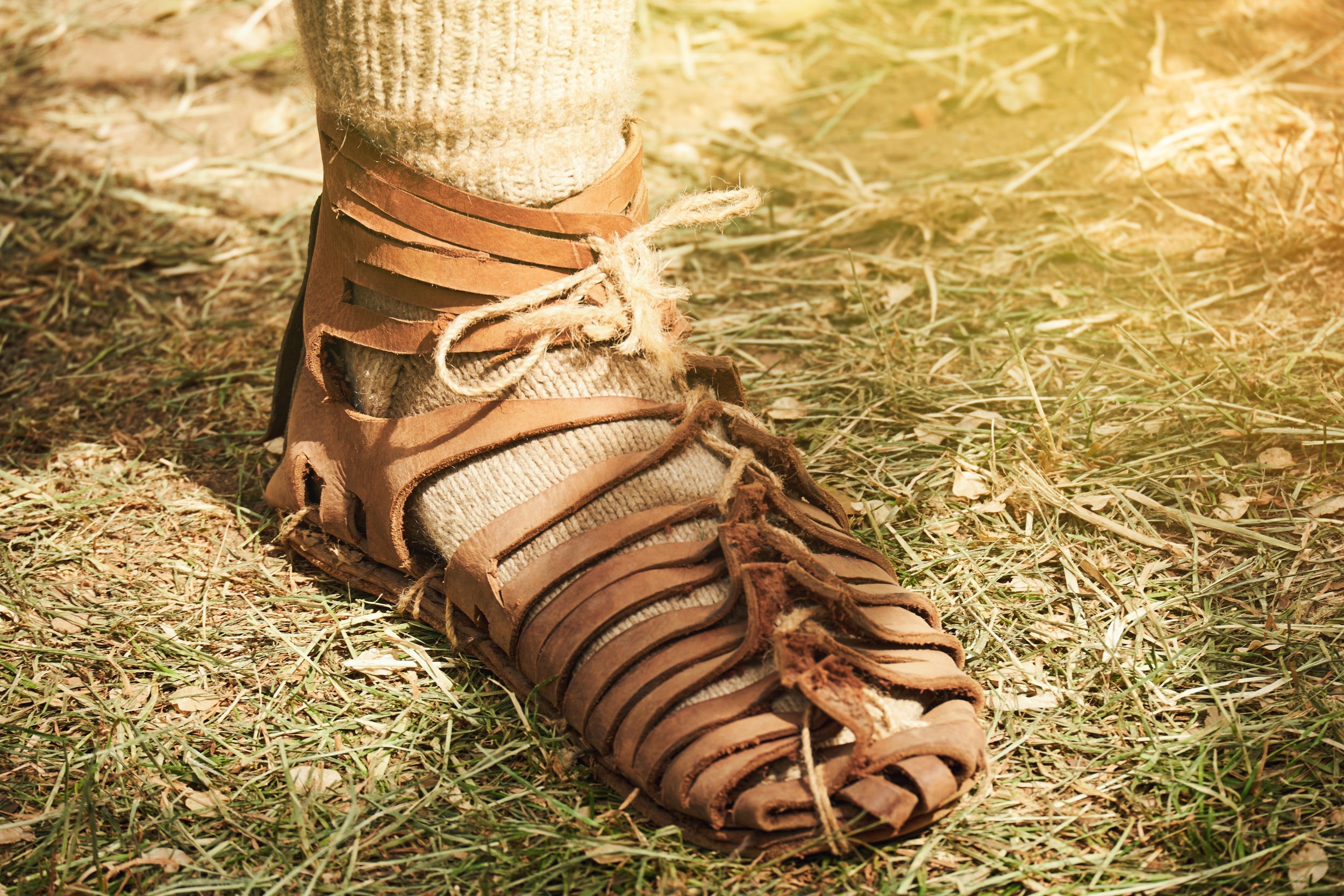Mankind has been wearing shoes on their feet since prehistoric times, fundamentally acting as protective tools to help with mobility over treacherous terrains and guarding from the elements. Over the centuries, our relationship with footwear has evolved beyond the need for protection to the technical and aesthetic shoes we wear on our feet today. Join Cherry Blossom as we break down a brief history of footwear...
Prehistoric Origins
Humans have been wearing shoes for thousands of years. We can’t pinpoint the first time Homo sapiens (or even Neanderthals) donned some primitive form of footwear, but we can guess that it was to protect their feet from rough ground and act as a barrier to the cold. The earliest evidence of footwear was discovered in Fort Rock Cave in Oregon: a pair of 10,000-year-old sandals. These sandals were made out of sagebrush bark and other fibrous materials, potentially including leather.
Ancient Civilisations
In ancient Egypt, sandals were crafted from papyrus, palm leaves or leather and were often decorated with intricate patterns. These sandals were relatively simple in design but for the Egyptians, they were a symbol of status. The more elaborate the sandal, the higher the social ranking. Similarly, footwear in ancient Rome varied depending on social standing, occupation and occasion, and was primarily made from leather. Soldiers would wear the iconic caligae sandals, a style now known to us simply as ‘Roman sandals’.
Middle Ages
During the Middle Ages, footwear began to evolve in both design and purpose. Shoes became more sophisticated and were made from leather, an easily accessible and durable material that, with the advances in craft from previous centuries, allowed for greater variety in styles. Pointed shoes, known as ‘poulaines’, became a popular fashion trend in medieval Europe. These shoes were characterised by long, pointed toes that could extend several inches beyond the foot. Footwear also began to take on more specialised roles: the nobility wore elaborate shoes made from fine materials that were often decorated with precious stones whilst peasants wore simpler, more practical footwear. The introduction of heels also began around this time, initially worn by men to add height and to help secure foot placement whilst riding horses.
The Renaissance and Beyond
The Renaissance period saw a surge in the use of luxury materials in footwear composition, like silk, velvet and gold thread. High heels were popularised by Louis XIV of France, becoming a symbol of status in the French court and creating widespread demand. Following on from the centuries-old correlation between footwear and rank, European society became increasingly class-conscious and shoes were continuously used as a mark of prestige. The more ornate the shoe, the wealthier the wearer. This persevered throughout the 17th and 18th centuries. By the late 1700s, shoes were mass-produced in Europe and the rise of the Industrial Revolution helped make footwear more affordable for the average person. The invention of the sewing machine in the 19th century allowed shoes to be made more efficiently, leading to an explosion in variety and accessibility.
The 20th Century and the Birth of Modern Footwear
The early 1900s saw the invention of the first rubber-soled shoes, which provided superior comfort and durability. Brands like Converse, founded in 1908, began producing athletic shoes, which were marketed towards basketball players. This marked the beginning of the now-ubiquitous sportswear industry. In the 1950s and 1960s, the rise of youth culture and the popularity of rock ‘n’ roll led to the sneaker craze, with iconic brands like Nike and Adidas emerging. Sneakers became a symbol of both athleticism and rebellion, merging performance with style. Over the years, technological innovations like cushioning, arch support and breathable materials revolutionised footwear, making it not only more functional but also more comfortable. In 1906, Britain’s first shoe polish manufacturer, Cherry Blossom, was founded, helping to revolutionise the way we take care of our footwear.
Footwear Today
We’re a quarter of the way through the 21st century and, today, the world of footwear is an enormous industry that blends advanced technology with cutting-edge fashion. Sneakers have become a global cultural phenomenon and are considered shoes for everyday use, not just for sports. Footwear now serves a wide range of purposes, from high-performance athletic shoes designed for professional athletes to luxury shoes crafted for high-end fashion. Technology has also played a huge role in modern footwear. Shoes with built-in sensors track athletic performance while 3D printing allows for custom-made shoes that fit a person’s foot perfectly. Sustainability is also at the forefront of modern footwear design, with brands focusing on eco-friendly materials and ethical production methods.
This focus on sustainability and looking after our wallets has led to the growing demand for shoe care. Today, Cherry Blossom is the only shoe polish manufacturer in Britain, evolving with the times to meet current footwear trends and habits. From products that are specifically designed to easily slot into a modern, busy schedule, like Shine & Go, to our comprehensive Sneaker Range, Cherry Blossom is now the nation’s favourite shoe care brand, available across a wide range of retailers, from John Lewis & Partners and Timpson to Tesco and Sainsbury’s.
Footwear has come a long way since our Neolithic ancestors first started putting animal hides on their feet as protection. Throughout the centuries, shoes have been synonymous with class and occupation and more recently have been used to enhance performance, reflect style and express personality. No matter how you wear your footwear, you can rest assured that Cherry Blossom will keep it clean, protected and looking like new. After all, we’ve spent nearly 120 years caring about your footwear — with Cherry Blossom, it’s in safe hands.






